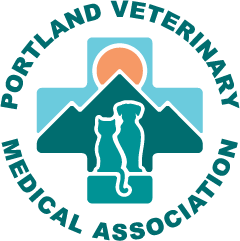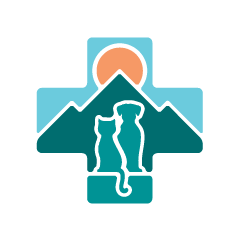COVID-19 Pandemic Resources
Practice Resources and Tools
Oregon Bureau of Labor and Industries COVID-19 Resources Website
Standard Operating Procedure- Guidelines for Veterinary Hospital Settings
The PVMA Board of Directors has created an SOP with recommendations to prevent veterinary professionals from contracting COVID-19, reduce transmission among employees, maintain a healthy work environment, and maintain healthy business operations.
**Please note: The information has been gathered and compiled from the CDC, OSHA, Oregon Health Authority, and AVMA. It is intended to provide general guidance to veterinary hospitals, however, any part is subject to change at any time. The CDC published updated guidelines April 8th for “critical infrastructure workers” that we do not interpret to be applicable to small animal veterinary practice.**
SOD PDF
World Organization for Animal Health- Questions and Answers on the 2019 Coronavirus Disease
WSVMA COVID-19 Info and Resource Page
OVMA COVID-19 Info and Resource Page
AVMA COVID-19 Resources
World Small Animal Veterinary Association COVID-19 and Pets
Oregon Health Authority Recommendations for Veterinary Facilities during COVID-19 Pandemic– November 2020
OSHA’s Guidance for Preparing Workplaces for COVID-19 (PDF)
EPA’s Registered Antimicrobial Products for Use Against Novel Coronavirus SARS-CoV-2, the Cause of COVID-19
Coronavirus (COVID-19) Supply Chain Update
Oregon Health Authority: Interim COVID-19 Guidance for Elective and Non-Urgent Health Care Procedures
Updated AVMA email with toolkits
LifeLearn Toolkit for Clients
Uncharted Podcast: COVID-10 Planning for your Practice
Considerations for mobile/housecall veterinarians
How to Protect Yourself
Minimize Exposure Flowchart
Guidelines for use of personal protective equipment (PPE)
WSVMA’s client letter template
Interim Guidance on Shelter Care of Animals Exposed to COVID-19
WSVMA Pet Owner Brochure about Pets and COVID-19

Headspace- Weathering the Storm
Yale- The Science of Well-being Course
CORONAVIRUS vs. COLD vs. FLU vs. ALLERGIES – Kansas State Department of Health
AVMA Wellbeing Resources
Covid-19 and Wellbeing
Wellbeing in a time of COVD – AVMA My Veterinary Life Podcast
General Wellbeing Resources
Pandemic self-care for veterinary teams – AAHA NewStat
Coronavirus anxiety overwhelmed this doctor. A deep breath helped – Washington Post
Mental Health and Coping during COVID – CDC
Emotional Wellbeing During the COVID-19 Outbreak – Suicide Prevention Lifeline
The Happiness Lab – Covid-related podcasts with Dr. Laurie Santos

Telemedicine tools and platforms
(While some are offering discounts, many are overwhelmed with requests and may not be able to take on new clients right now)
While there are many tools and programs to help, telemedicine is as simple and phone and video calls, email, texting, photos, videos, etc. Please make sure to document records as well as if the client/patient were in your practice.
Many have found success using google voice, microsoft teams, and google hangouts for both team and client communications.
Pet Desk
Vet2Pet
Anipanion
TeleTails
Vetlocity
VitusVet
Petlocity
GuardianVets
TeleVet
BabelBark
PetZam
Employment and Financial Resources
Oregon Bureau of Labor and Industries COVID-19 Resources Website
U.S. Chamber of Commerce Foundation Workplace Tips for Employees
COVID-19 Labor, Employment & Benefits Legal Update – Lane Powell Attorneys
US-Chamber-of-Commerce-Emergency-Loan-Guide-and-Checklist
Small Business Interruption Loans
Federal Loan Repayment Pause
SBA Disaster Assistance in Response to the Coronavirus
Coronavirus (COVID-19): Small Business Guidance & Loan Resources
Families First Coronavirus Response Act: What are the New Time Off Obligations that Covered Employers must Address?
AVMA-Updated 3/27/20
CARES Act
Families First Coronavirus Response Act
What the relief packages mean to veterinary small businesses
Administrative announcements
From Buckley Law- PVMA’s lawyer
Buckley Law’s Employment Group has been closely following new federal and state laws and emergency orders as they develop to keep our clients up to date in an ever-changing environment. We have recently updated some FAQs, links are below.
On March 18, 2020, as a direct result of the ongoing COVID-19 pandemic, President Trump signed the Families First Coronavirus Response Act (“Act”) into law. This new Act is also known as HR 6201. The two key laws that will impact many Employers are the: (1) Emergency Family and Medical Leave Expansion Act (“FMLA Expansion Act”); and (2) Emergency Paid Sick Leave Act (“Emergency Paid Sick Leave Act”). Below are two FAQs on the new acts.
FMLA Expansion Act – FAQ
Emergency Paid Sick Leave Act – FAQ
News and General Information
2022 OHA Resources
New OHS COVID-19 Support Hotline intended for those who test positive: 866-917-8881
New OHA COVID resource page: https://covidblog.oregon.gov/test-positive-new…/…
Updated Testing access info: https://govstatus.egov.com/or-oha-covid-19-testing
April 5- Volunteer Vaccinator Sign-Up
Last week, the Oregon Health Authority, signed an authorization under the Public Readiness and Emergency Preparedness Act (PREP Act) which allows additional individuals, including veterinarians, to administer COVID-19 vaccines to assist the State in its vaccination efforts against COVID-19. This followed an earlier declaration by the Secretary of Health and Human Services for veterinarians—and veterinary students—to be among those eligible as COVID vaccinators.
Immunity from Liability
The PREP Act provides broad immunity from suit and liability under federal and state law to those engaged in activities aimed at combating the COVID-19 pandemic, and includes administering the vaccines approved by the FDA.
Dr. Emilio DeBess, Oregon Healthy Authority, Public Health Veterinarian, has provided detailed instructions on how to sign-up to become a vaccinator in Multnomah County. Health officers of Washington and Clackamas counties are now also asking people to sign-up via the State Emergency Registry of Volunteers in Oregon (SERV-OR) system. We recognize others have been able to volunteer directly in various counties but this is the most centralized/organized sign-up option at this time.
November 18- Statewide 'Freeze' and OHA Guidance for Veterinary Facilities
While the newest stay at home Governor’s orders that began November 18th and will last for the next 2-4+ weeks, do not specifically restrict veterinary practice operations, it is important to review and assess rules, provisions, and guidance for employees as we move into this ‘freeze’ period.
Our community, consistent with the overall increase in cases across the region, is seeing an increased number of employees confirmed and presumed positive with COVID. It is important we collectively work to keep our our colleagues, clients, and loved ones safe and healthy.
In addition to the new OSHA Rule provisions, Dr. DeBess and OHA have provided supporting guidance as more veterinary practices are being directly impacted by ill or positive employees. Much of it is similar to previous guidance and is in alignment with the OSHA rule finalized last week, but the more it can be shared to support your team through a stressful time, the better.
Veterinary clinics are a part of the health care system.
To ensure the health & safety of veterinary clinic staff and pet owners, the Oregon Health Authority (OHA) recommends taking the following precautions.
1. Staff should take their temperature at home prior to work.
2. Upon arrival, ask staff about any symptoms such as:
· cough
· sore throat
· fever
· headache
· loss of smell or taste
· diarrhea
· vomiting
If any of the symptoms are present, staff should not be allowed to work.
Any staff member exposed to a confirmed case outside of the veterinary facility setting (households, friends, etc.) should not work and be quarantined for 14 days.
Quarantine is mandatory regardless of a negative test.
COVID Confirmed and Presumptive Positive Team Members
When veterinary staff have tested positive for SARS-CoV-19 in a veterinary setting, it is necessary to help the local health authority with contact tracing to identify those exposed to COVID-19.
· Exposed individuals should be advised to get tested as per testing guidelines (page 3, section 3).
· Exposed individuals may be quarantined for 14 days.
· Only with the approval of the local Health Officer, exposed individuals may only work with other exposed individuals as a cohort for 14 days. No additional staff can be added to the cohort once the 14-day period begins.
· Exposed individuals may not attend gatherings, outings or have extended contact with anyone else outside of their home during the 14 days.
· When at home, exposed individuals should wear a face covering and follow OHA quarantine guidance for 14 days to limit exposure to other household members.
· If one of the exposed individuals within the cohort were to test positive within the 14-day quarantine, then all exposed cohort members should be sent home and again quarantined for 14 days from their last exposure.
COVID-19 infection notification process
Employers must establish a mechanism for notifying both exposed and affected employees within 24 hours of the employer’s knowledge of a potential COVID-19 workplace exposure (e.g. an individual with COVID-19 in the workplace.)
Medical removal (quarantine and return to work)
Whenever OHA, the local public health agency or medical provider recommends an employee be restricted from work due to quarantine or isolation for COVID-19, such as through identification during contact tracing activities, the affected worker(s) must be directed to remain at home and away from other non-quarantined individuals. Quarantined individuals must be allowed to work from home if suitable work is available. The affected individual is entitled to return to their previous job duties if they are still available. Return-to-work and testing decisions must be made in concordance with public health guidance and the employee’s medical provider.
November 10- COVID-19 Workplace Risks: Oregon OSHA Rule Finalized
In response to the continued increase of COVID-19 cases and the ongoing efforts to navigate the pandemic, Oregon Occupational Safety And Health Authority (OSHA) has adopted a temporary enforceable workplace rule.
The new rule is similar in many parts to the Oregon Health Authority (OHA) guidance that has been shared out over the past 7 months, including physical distancing and face coverings. Additional layers are now included relating to infection control, notice to employees, requirements to assess COVID-19 exposure risk, and workplace monitoring that are new to Oregon employers, including those in veterinary medicine, and will require action and planning on your part.
The provisions take effect November 16, 2020 and will remain in place until May 4, 2021, unless revised or repealed by that date.
Please make sure to read through the requirements thoroughly and note due dates for compliance in several sections in bold.
The physical structure and set-up of veterinary facilities are as unique and diverse as the people in them! Please keep this in mind when interpreting the rule provisions for your practice, applying them, and working towards compliance.
May 1st- Elective and non-emergent procedures to resume
Describe the item or answer the question so that site visitors who are interested get more information. You can emphasize this text with bulaOn March 19, 2020, Governor Brown issued Executive Order No. 20-10 to cancel all elective and non-urgent health care procedures that require personal protective equipment (PPE) effective March 23, 2020.
On April 27, 2020, Governor Brown issued Executive Order No. 20-22, which allows veterinary facilities to resume elective and non-emergent procedures that require PPE, starting May 1, 2020, if the criteria in this Oregon Health Authority (OHA) guidance can be met.
Authority: Executive Order No. 20-22, ORS 433.443, ORS 431A.010. Applicability: This guidance is applicable to veterinary facilities.
Full Guidance
April 1st- From the Boardroom
As I sit to write this note to my fellow PVMA Members, I think about how much our world has changed and in such a short course of time.
Strangely enough I was planning on writing to you today about an earthquake preparedness event we were organizing for May, featuring TED speaker Steve Eberlein. And then a different kind of disaster hit that has back-burnered earthquake preparedness for the time being.
Needless to say “Pandemic Preparedness” was not on our radar, but now that we are in the middle of this mess, it is wonderful to see how truly resilient the veterinary community is.
We are a small but powerful group. We are determined to keep our doors open to provide the care our patients need to stay free from pain and suffering, all the while adapting to limitations placed on us to fully support our human medicine counterparts. We are adept in balancing the needs of our patients, our staff, and our clients.
These next few weeks to months will be challenging for everyone. Things will continue to change and I know we will quickly adapt.
Our goals are to provide you with the most up-to-date information about this ever-evolving crisis, and to offer guidance on how “best” to respond. The PVMA Board will do all we can to keep our members unified, informed, and supported through these times.
We have set up a weekly virtual meeting with the area emergency veterinary hospitals to keep our finger on the pulse of the front lines. We will relay any pertinent information to our area hospitals so that we can all function in support of each other. Things will inevitably get worse before they get better.
Cristina has been working non-stop to keep our website up to speed. On our PVMA home page there are now direct links to COVID-19
updates as it pertains to our members. Last week we partnered with the Oregon Veterinary Medical Association and Washington State
Veterinary Medical Association to provide an online webinar (1st of a series) on “Leadership Through Crisis” from the Omni Practice
Group and will be hosting our own “Calm in the time of COVID-19” panel of trusted partners, this Thursday at 5pm.
We will continue to look at opportunities to keep you informed and educated. Stay safe everyone. Reach out if you need help, advice, or
assistance in any way.
Best,
Dr. Laura Lambruschi
PVMA President Elect
March 23rd Governor's Order: Stay Home, Save Lives
With this governor’s order ‘Stay home, save lives’. it may be confusing to not see veterinary hospitals and shelters spelled out, however, the way it is interpreted by leadership is that veterinary hospitals and shelters are considered under the umbrella of ‘essential business’. The AVMA and OVMA have advocated for formal inclusion of veterinary hospitals and animal shelters in the list of essential businesses. Your clients/pet owners making their way to/from you, would be doing so appropriately.
Please know, there could be addendums at any time, there may be supportive documents and details coming out, but this is where things are right now.
“Executive Order: Stay Home Except for Essential Needs
On March 23, Kate Brown issued Executive Order 20-12, effective immediately until further notice. This is a statewide order. Failure to comply with the order will be considered an immediate danger to public health.”
AVMA: Veterinary practices are essential businesses
March 19th- Governor's Order: PPE Preservation
Governor Kate Brown directed all Oregon hospitals, outpatient clinics, and health care providers, including veterinarians and dentists, to cease all non-emergency procedures, in order to preserve personal protective equipment (PPE), such as surgical masks, gowns, and gloves, for health care workers treating COVID-19 patients.
What does this mean for veterinary practices?
Stop any elective surgical procedures that use PPE, which is exam gloves, sterile gloves, masks, gowns, or any other barrier used in medical practice. This order currently is issued through June 15th.
The definition of “elective” can vary according to client and practitioner but, in general, elective surgeries include spays and neuters, dental cleanings, and any other care that could be deferred without causing pain or suffering to our patients. Medical problems that cause patient discomfort that can only alleviated by a procedure needing PPE are not “elective.”
Patient care, including examinations and vaccinations, can continue as they do not require PPE but practitioners should use discretion regarding unnecessary clinic traffic and interpersonal contact due to the mandate of social distancing. Read information and guidelines on this.
Non-Emergency Surgical Procedures
By Executive Order 20-10, Governor Brown has directed veterinary hospitals to cease all elective and non-urgent procedures that utilize Personal Protective Equipment (PPE), in an effort to preserve PPE supplies for COVID-19 response. By March 23, veterinary practices are to stop performing any elective and non-urgent procedures to preserve PPE equipment. Those procedures may be rescheduled to occur not before June 15, but keep in mind they may need to be rescheduled again if her order remains in place at that time. The definition of “elective” can vary according to client and practitioner but, in general, elective surgeries include spays and neuters, dental cleanings, and any other care that could be deferred without causing pain or suffering to our patients. Medical problems that can only alleviated by a procedure needing PPE are not “elective.”
The specific language of the order defining the affected procedures follows: “A procedure or surgery is exempt from the limitations of set forth in paragraph 1(a) of this Executive Order if a three-month delay in the procedure or surgery would put the patient at risk of irreversible harms. Criteria for determining whether irreversible harm exists include but are not limited to:
(1) threat to the patient’s life;
(2) threat of irreversible harm to the patient’s physical or mental health;
(3) threat of permanent dysfunction of an extremity or organ system;
(4) risk of metastasis or progression of staging; and
(5) risk of rapidly worsening to severe symptoms (time sensitive).”
Surplus PPE
Gov. Brown has asked veterinarians to donate surplus PPE to the human health effort. Per EO 20-10, veterinarians shall assess their stock of PPE by March 27 and then donate surplus, if any. As we had already been asked by the Governor’s office to seek PPE donations from the veterinary community, we are seeking further clarification of this process and will advise the membership once we have it.
Non-Surgical Patient Care
Non-surgical patient care, such as examinations and vaccinations, can continue as it does not require PPE.
It’s important to remember that veterinarians will not necessarily be allocated any additional PPE in the near future so your current inventory may be all that is available to you for now. Read about conservation and re-use strategies.
March 19th- OVMEB Telemedicine Allowances
Governor Kate Brown has determined that compliance with certain portions of OAR 875-015-0035 (Veterinary Telemedicine) would prevent, hinder, or delay mitigation of the effects of the COVID-19 emergency. Pursuant to her emergency powers under ORS 401.168(2), Governor Brown therefore declares and orders that portions of these rules be suspended for the duration of the COVID-19 state of emergency declared by Executive Order 20-03.
Effective immediately and until further notice. This means that veterinarians have the option to provide treatment via Veterinary Telemedicine without first having conducted a physical exam. Please note that all other portions of the rule continue to apply.
News Updates - Governor's Orders
General Information and Updates
CDC Coronavirus Disease 2019 (COVID-19) Situation Summary
COVID-19 and Animals
Frequently Asked Questions and Answers
Coronavirus Disease 2019 Information for Travel
Information for Healthcare Professionals
Preventing COVID-19 Spread in Communities
Protect Yourself from Flu at a Large Public Event
Get Your Household Ready for Coronavirus Disease 2019
World Health Organization (WHO)- Rolling updates on coronavirus disease (COVID-19)
Oregon Health Authority COVID-19 Resources
What to do if you are sick and suspect COVID-19
Oregon Health Authority Signs You Can Post
Oregon Health Authority Statewide Mask, Face Covering, and Face Shield Guidance
Oregon Health Authority Veterinary Facility Guidance
Centers for Disease Control and Prevention Companion Animal Veterinary Guidance

